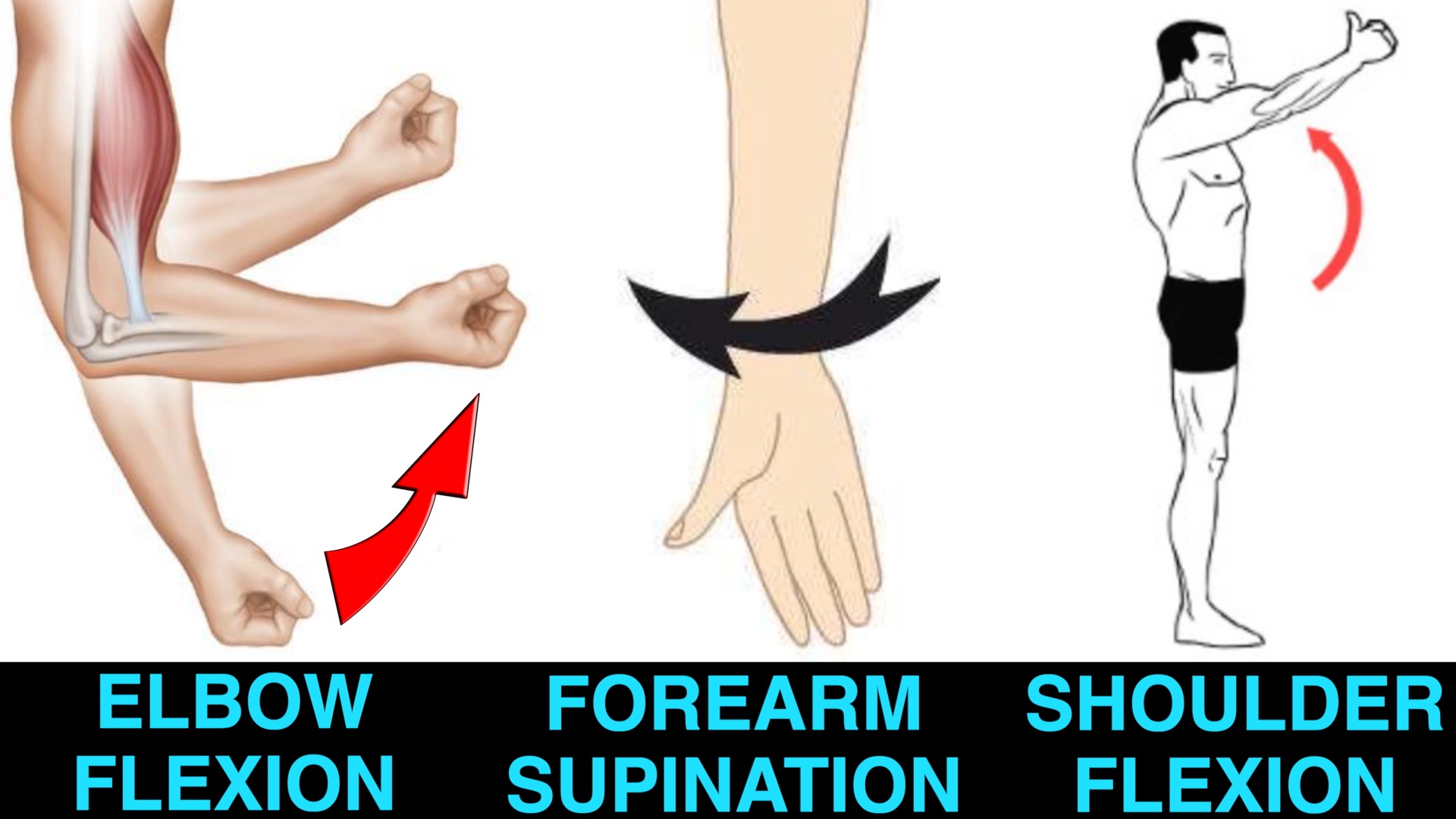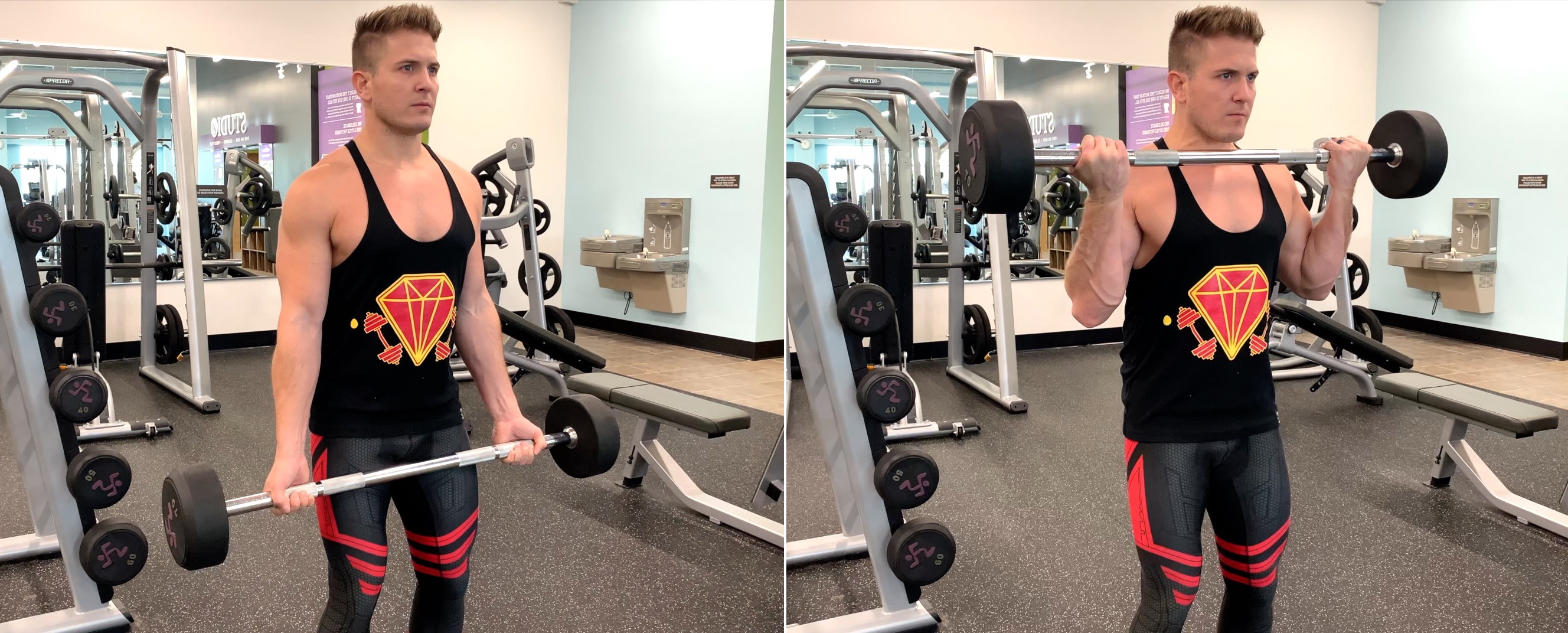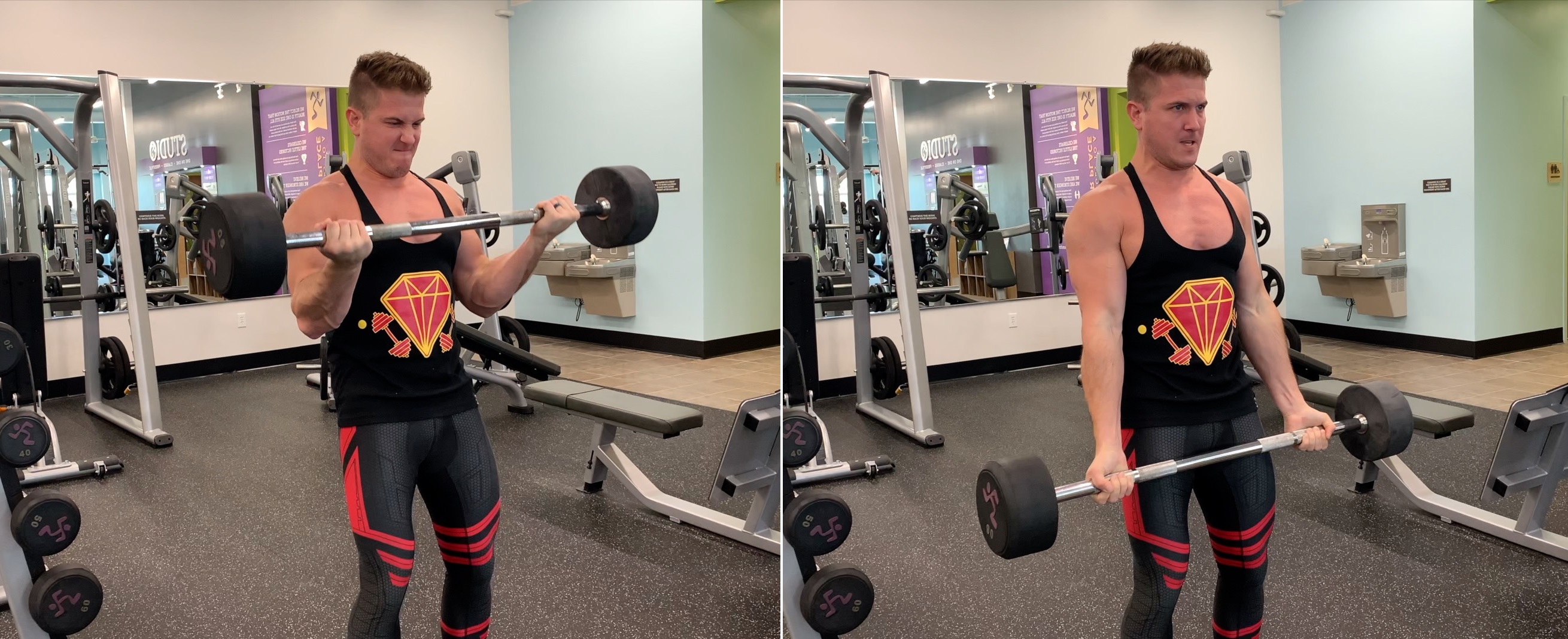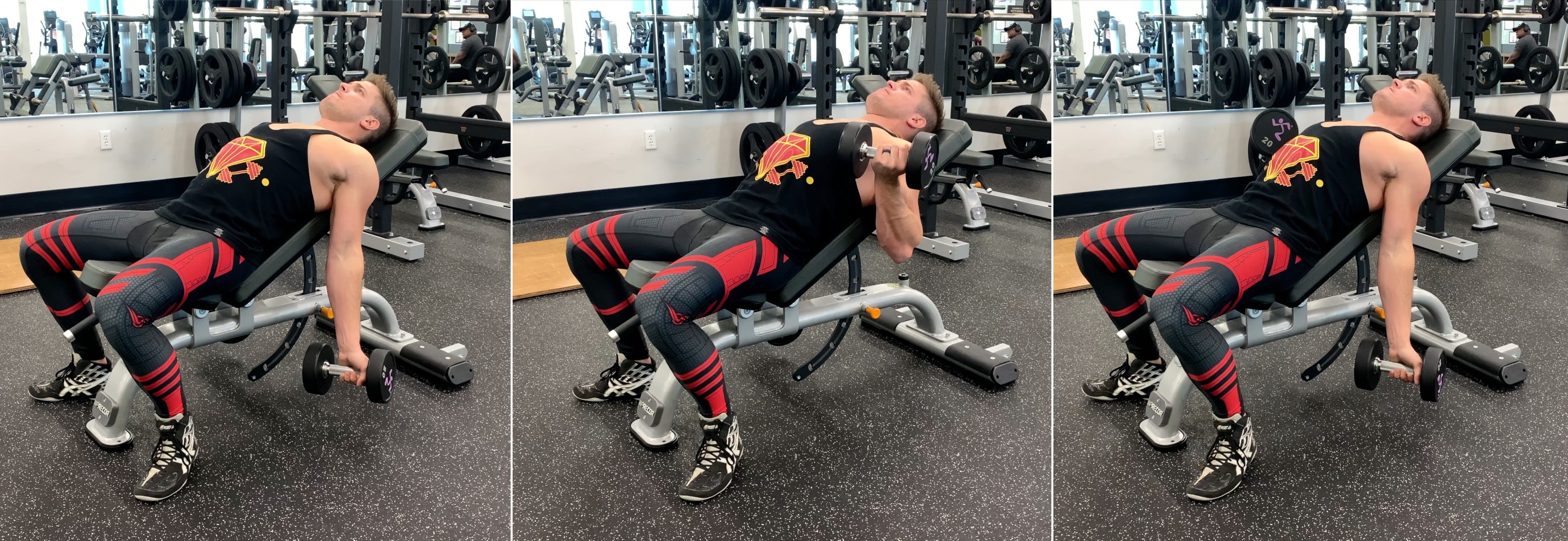Biceps: The Only Two Exercises You Need For Growth!
Bigger Arms Now!
In today’s article we’re going to talk about the only two exercises you need to build big biceps. If you’ve missed any of the other videos in this series where we’ve talked about the only two exercises you need to build a big chest, build a big back or build big triceps, I’ll link to that playlist HERE.
For those of you who have already downloaded my app MUSCULARSTRENGTH, you can actually go to the ARTICLES section and type in ‘Only Two’ in the search bar and the articles for the videos in this series should pop up so that you can read the article OR watch the video, all in one place! In fact those of you reading this might already be using the app, but if you’re not, make sure you go and download it now!
Biceps Functions
Before we jump into the exercises, let’s talk about the function of the biceps. You have elbow flexion, which everyone should know. You then have forearm supination, where you turn your forearm in so that your palm is facing you and lastly you have shoulder flexion. The reason why you need to know the functions is because if you want to activate the biceps properly, you have to make sure that you’re using them as intended for what they’re supposed to do.

Is Direct Biceps Training Necessary?
Now I know there are going to be some of you saying that you don’t need direct biceps training for them to grow and all I have to say is this: Not every single person in the world, or even most people that I see walking around on a daily basis (whether they’re in shape or not) are blessed with amazing biceps genetics where the biceps bellies are twice as thick as mine. I, for example, have pretty good biceps, but from the front, they don’t look too impressive. I have to basically walk around flexing if I want to show off how big my biceps are and it’s just the way they are. It’s not because they don’t get trained and it’s not because my workouts are terrible, it’s just that genetics are different for everybody.
The only reason why I bring that up is that if you’re like me and you don’t have huge biceps bellies, you do have to do some direct biceps work on top of your back training, plain and simple. It’s not rocket science. Now it’s time to apply your knowledge of those functions of the biceps to the next two exercises so you can maximize your training and start to see some serious growth and improvement. You’re also going to take advantage of overloading, working through the negative and then focusing on a huge stretch and flex in order to maximize your biceps training as well.
Exercise #1: Barbell Biceps Curl (6 – 7 Sets: 8 – 10 Reps)
The reason why you’re doing a barbell biceps curl rather than with dumbbells is because I want to make sure you’re taking advantage of the functions of the biceps, one of them being forearm supination. The barbell is going to keep you in constant supination throughout the entire range of motion, allowing you to maintain more activation on those biceps. You’ll also be able to overload with more weight per repetition using a barbell as well. For this exercise, only take a 60 – 90 second rest in-between each set.

However, that doesn’t mean I want you throwing the weight around with sloppy form, because you still need to be in control. But as you’re doing those 8 – 10 repetitions, let’s say you get to rep 7 or 8 and you want to finish off 10, but your biceps are tired and completely toasted. You can then take advantage of my Cheat & Recover technique to get those last few reps. You basically skip the concentric portion of the movement and focus on a heavy negative. Techniques like Cheat & Recover need to be in your workout arsenal so that you know when to apply them and how to apply them safely.
If you’ve never seen my Cheat & Recover training before, it’s very simple. For a barbell biceps curl, you’re going to bring the weight up by using a bit of momentum, lock those elbows in position and then focus on controlling the weight on the way down.


Exercise #2: Incline Dumbbell Curl (6 – 7 Sets: 8 – 10 Reps)
As we discussed earlier with the functions of the biceps, shoulder flexion is one of those functions. You therefore know that shoulder position is crucial, or plays a role, when it comes to training your biceps. You’re going to take advantage of that knowledge and do the incline dumbbell curl because this is going to put your elbows in shoulder extension because you’re on an incline bench while performing the movement.
What that’s going to do is allow you to take full advantage of the deepest stretch you can get on your biceps when performing a biceps curl. Remember, you get the most muscle damage for regrowth during the negative and in the stretch. When it comes to the biceps the stretch is when your arm is fully extended and that’s also called the sticking point. That’s why a lot of people like to avoid full range of motion, because they can’t lift as much weight because they can’t push through the sticking point of the exercise. When you do the incline dumbbell curl, it’s not an exercise that requires a lot of weight.

You’re going to use 10lbs, 15lbs or maybe 20lbs max and the first few reps are going to feel relatively easy. But after the first few, it just gets harder and harder and harder quite quickly. It’s actually kind of a weird sensation because they do feel super light to begin with, but by repetition number five it feels like you’ve lost all of your strength. But don’t worry, that’s totally normal here!
To perform this movement, make sure you’re on a slight incline (just like if you were doing an incline dumbbell bench press). You’re going to throw those elbows back and then once those elbows are back you’re going to keep them in that position as you curl the weight up. Try to pause for a brief second at the top of the movement so you can flex those biceps as hard as possible before returning back down to the starting position and repeating for your entire set.
Conclusion
That’s it! Those are the only two exercises you need to start seeing more growth and progression with your biceps. When you go to the gym you don’t have to do 15 different exercises for the muscle group that you’re training. For most muscle groups, the max number of exercises you’re going to need is two, maybe three because that’s all you’re going to need to hit all the functions of that muscle, which include being able to overload with it and take advantage of things like the stretch and the flex during your repetitions. It’s a lot simpler than a lot of trainers make it out to be. If you don’t believe me, all you have to do is add this biceps workout to your routine 2 – 3 times per week and then come back at me a month from now and let me know how you feel!








